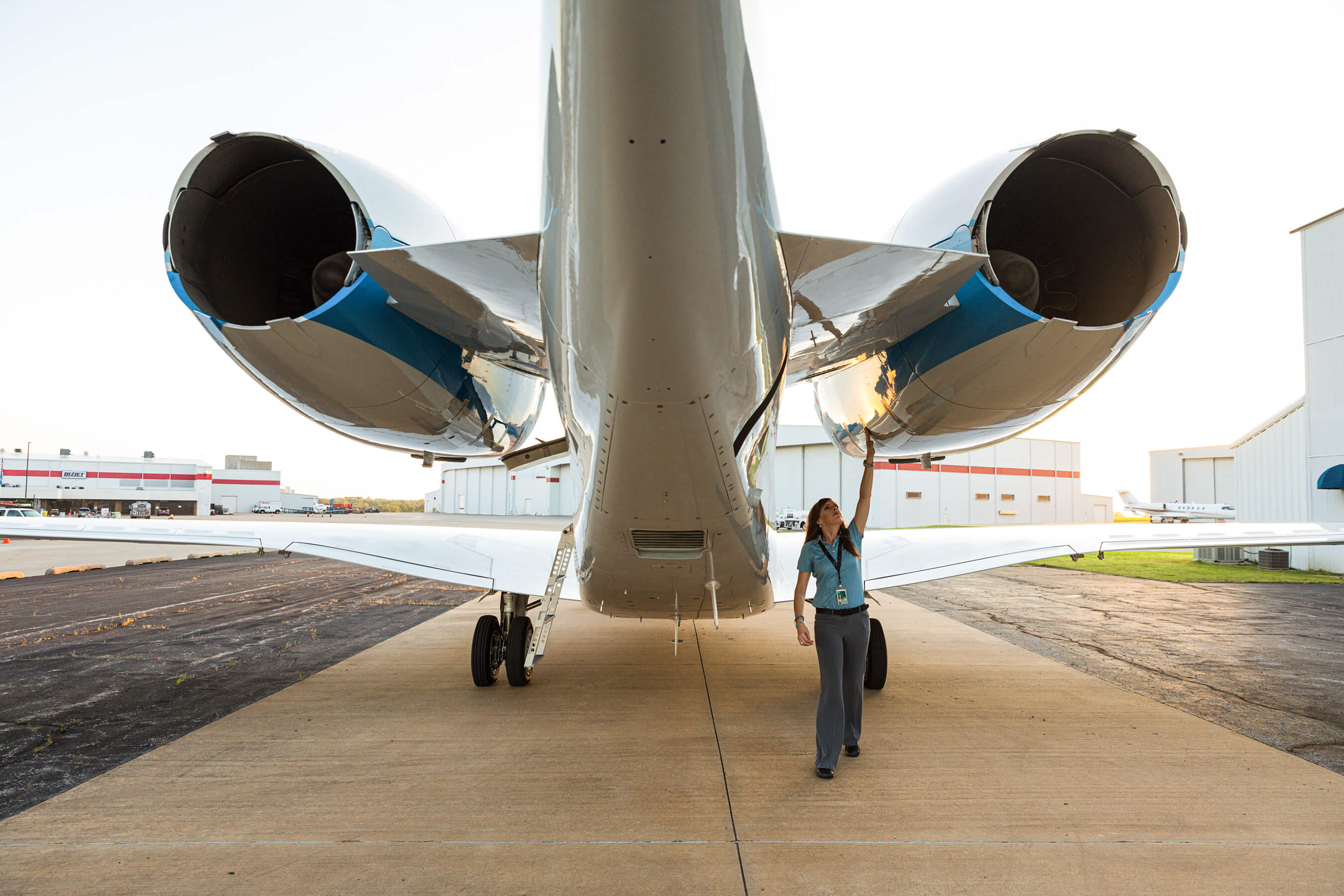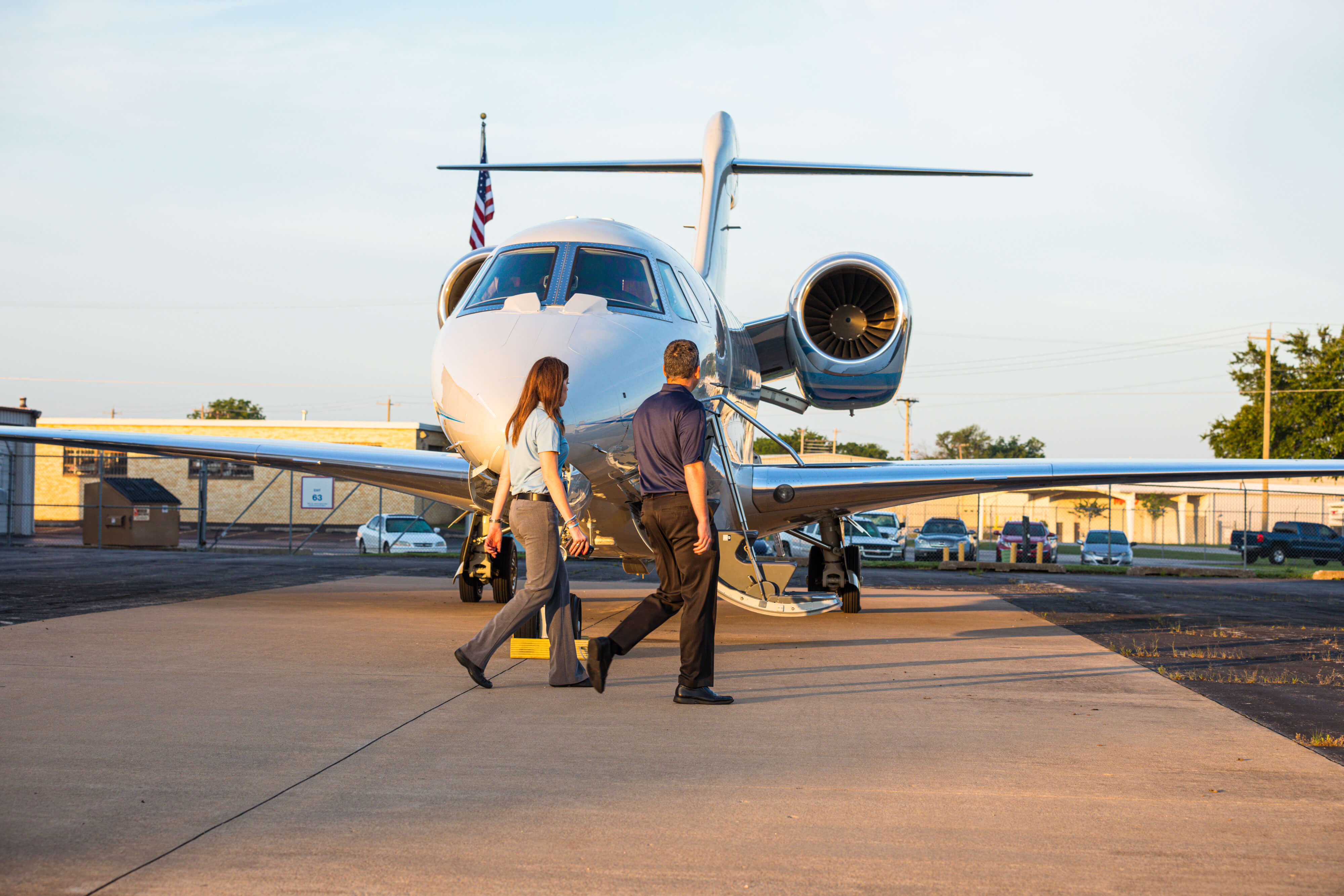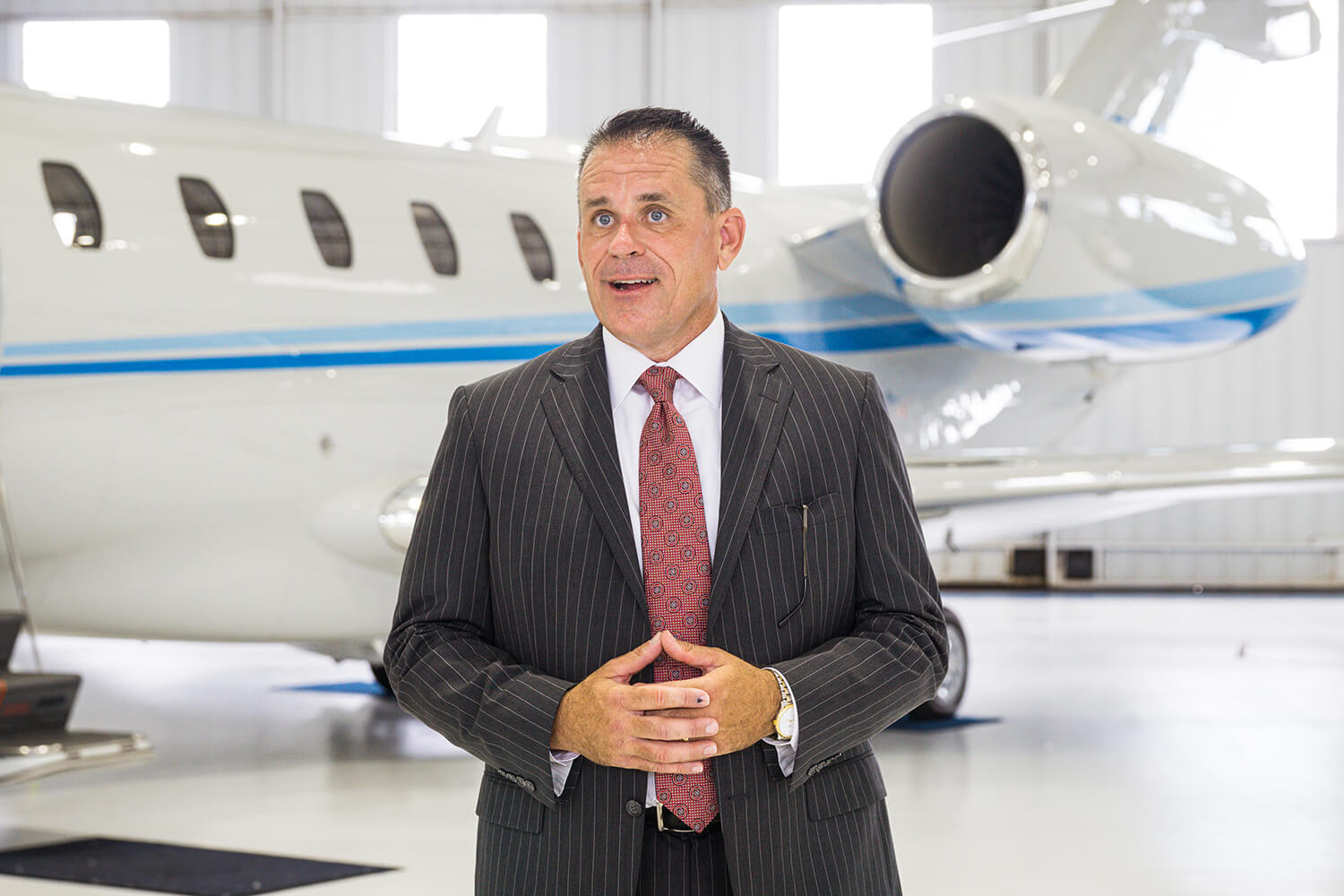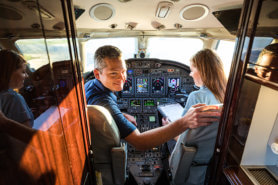
Williams has been operating aircraft to support its pipeline business since 1927.
Nov. 18, 2019
The Williams flight department traces its history to 1927 – the year Charles Lindbergh made his historic transatlantic solo flight. That year, the company started flying slightly shorter missions: using a Spartan C3 biplane to survey land suitable for building natural gas pipelines.
In the decades since, Williams has used dozens of aircraft types, including helicopters, while becoming one of the largest pipeline operators in the United States. Today, the company flies two Cessna Citation Xs out of Tulsa, OK, where it is headquartered.
The aviation team led by Director of Aviation and Corporate Travel Nick Verdea, CAM, GLP has earned NBAA’s 50-Year Safe Flying Award and achieved IS-BAO Stage 3 certification while flying more than 600 hours a year. It’s a proud history, but the team isn’t resting on its laurels. Instead, Verdea has fostered a culture in which people are devoted to better-ing themselves, as well as the operation.
“We’re always trying to find best practices and better ways of doing things, so we can get the job done as safely and efficiently as possible,” said Verdea.

ONE EXTRA CLASS
That drive for continuous improvement starts with every team member. When the pilots and maintenance technicians go to annual recurrent train-ing, they each take one extra class, in addition to what is required. For example, a technician might take an advanced class on engines or avionics. Every two years, the pilots take upset prevention and recovery training. A few team members attend the Bombardier Safety Standdown every year, as well as NBAA conferences.
“We try to bring education from a variety of programs and training providers back here so we can get the best of everything,” said Verdea.
When team members return from these events, they share what they have learned. Verdea also shares resources, such as newsletters from the NASA Aviation Safety Reporting System or the NBAA Safety Committee’s Top Safety Focus Areas, and the team discusses them in quarterly safety meetings.
Professional development is expected. Involvement with the industry is encouraged. When Verdea was hired as the director in 2012, he was the only NBAA Certified Aviation Manager (CAM) in the department. Today, more than half the team are CAMs.
“Williams is big about offering us edu-cation outside of the company that we can apply on the job,” said Fred Tinkler, CAM, who decided to pursue the CAM when he was promoted to chief pilot. “My background was in aviation technology, flying and the mechanical side. I hadn’t formally studied management or leadership, and that was covered getting ready for the CAM.”
Verdea has served on the CAM Governing Board, and Maintenance Chief Mike Webb, CAM, has long been involved in several industry groups, including NBAA’s Citation Technical Advisory Committee.

RAISING YOUR HAND
As aviation team members grow in industry knowledge, Williams has given them opportunities to take on more responsibilities and advance their careers. In 2014, for example, Williams went through a reorganization and the company leadership was looking for a manager to head the corporate travel department.
“I raised my hand, and took over the travel department in addition to the flight department,” said Verdea. “I had a steep learning curve because it was a new business to me.”
Williams sent Verdea to the University of Virginia’s Darden School of Business for classes on corporate travel. The company also supported him entering the Global Leadership Professional program offered jointly by the University of Pennsylvania’s Wharton School of Business and the Global Business Travel Association. The program took over two years to complete, but it gave Verdea the tools to manage a new line of business.
“I think it’s incumbent upon a leader to always try to better himself through education and training,” said Verdea.
“And we try to instill that value: that anybody can step up to the next level at Williams. If we didn’t offer those opportunities, we’d lose our best pilots and mechanics.”

Employees at every level use the air-planes to travel. The company’s leaders also travel to meet with investors in New York City, regulators in Washington, DC and customers in Houston. And they do not just travel for meetings.
“A key part of our business strategy is traveling to the many remote locations that we have along our pipeline system,” said CFO John Chandler. “Williams touches about 30 percent of the natural gas in the United States. In a company the scale and size of Williams, it’s imperative we’re able to visit the breadth of our operations and our partners.”
The company airplanes also help Williams’ engineers and technicians respond to potential safety incidents, getting teams on the ground in hours.
“Business aviation is, for us, an emergency response tool,” said Chandler.
SEE IT, OWN IT
The same safety philosophy that applies to pipelines informs the flight department’s safety management system (SMS). It’s called the Williams Way.
A sign with those words hangs in Verdea’s office, and it continues: “If you see it, you own it.” That means that whoever sees a potential safety hazard is responsible for not only reporting it, but also making sure it is addressed.
That’s why, despite the SMS and safety meetings, Safety officer Darren Rector sees the most important part of his role to be one-on-one safety discussions.
“Communication is big. I try to spend time talking to everybody,” said Rector. “They submit a report, but when you talk to them face-to-face, you get all the details that might get lost in the paper-work shuffle. Then, when it comes time to make a change, everybody’s involved. It’s a group decision.”
OFFSHORE OVERSIGHT
In 2015, when Williams’ contract with a helicopter operator that provided transportation to and from offshore gas platforms in the Gulf of Mexico was set to expire, Director of Aviation and Corporate Travel Nick Verdea worked with longtime aviation maintenance chief Mike Webb to review that con-tract and put out an open bid for new vendors.
“Because of their safety record and their knowledge of the aviation industry, Nick and his team oversee our helicopter service providers in the Gulf,” said CFO John Chandler.
Webb, who has been with Williams for more than 40 years, has extensive experience overseeing helicopter operations in the Gulf.
“The offshore helicopter environment is a completely different sort of operation than fixed-wing aircraft,” said Webb. “It’s low-altitude, over water. The platforms have weight limitations. The aircraft are used more like a pickup truck.”
The aviation team signed a new helicopter vendor that saved Williams about $6 million over the five-year term of the contract. The team also raised the level of service, enhanced standards for onboard safety equipment, and monitored the safety of the operation, partly through audits.

SNAPSHOT: Williams
Aircraft:
Two Cessna Citation Xs
Base:
Headquartered at Oklahoma’s Tulsa International Airport (TUL)
Personnel:
Six pilots (including the director), two maintenance technicians, one maintenance assistant and two schedulers (one part time)


 International Business Aviation Council Ltd.
International Business Aviation Council Ltd.